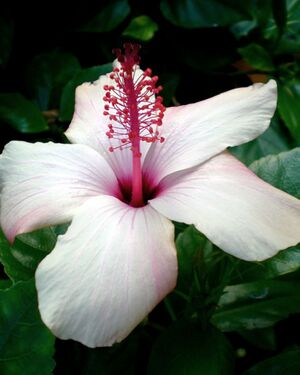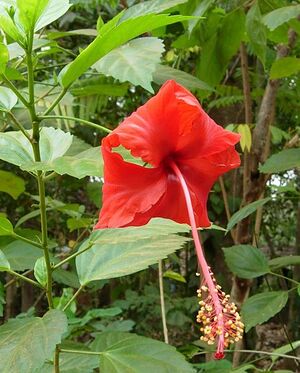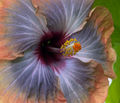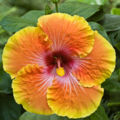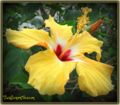Hibiscus: Difference between revisions
No edit summary |
added bunch of photos to the gallery |
||
| Line 96: | Line 96: | ||
==Gallery== | ==Gallery== | ||
<gallery> | <gallery> | ||
Image: | Image:Peach Double Hibiscus -7129.jpg | ||
Image:Hibiscus purple cream-2036.jpg | |||
Image:Hibiscus-stages.jpg| | Image:White hibiscus-2012.jpg | ||
Image:Yellow pink hibiscus-5649.jpg | |||
Image:Giant Hibiscus-884.jpg | |||
Image:Survival in the shadow of the wood-4458.jpg | |||
Image:Yellow pinkeye-208.jpg | |||
Image:A flower close to the ground-4261.jpg | |||
Image:Hibiscus-stages.jpg|At left, a flower emerges from a bud. At right, the same flower less than 18 hours later. | |||
Image:Hibiscus1.jpg|A hibiscus, showing [[pistil]] and [[stamen]]s | |||
</gallery> | </gallery> | ||
Revision as of 17:56, 27 November 2008
Hibiscus {{{latin_name}}}
|
Hibiscus
| ||||||||||||||||||||||||||||||||||||||||
|---|---|---|---|---|---|---|---|---|---|---|---|---|---|---|---|---|---|---|---|---|---|---|---|---|---|---|---|---|---|---|---|---|---|---|---|---|---|---|---|---|---|
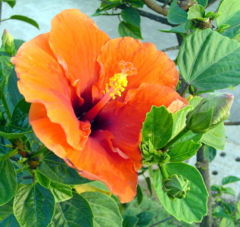
|
|
| |||||||||||||||||||||||||||||||||||||||
| |||||||||||||||||||||||||||||||||||||||||
Hibiscus, or rosemallow, is a large genus of about 200–220 species of flowering plants native to warm, temperate, subtropical and tropical regions throughout the world. The genus includes both annual and perennial herbaceous plants, and woody shrubs and small trees.
The leaves are alternate, simple, ovate to lanceolate, often with a toothed or lobed margin. The flowers are large, conspicuous, trumpet-shaped, with five or more petals, ranging from white to pink, red, purple or yellow, and from 4-15 cm broad. The fruit is a dry five-lobed capsule, containing several seeds in each lobe, which are released when the capsule splits open at maturity.
Care
Hibiscus flowers need to be taken care of in warm temperatures. They bloom best with temperatures ranging from 60 to 90 degrees. The hibiscus needs to be watered carefully. Make sure you do not overflood the roots. Keep a steady flow of water for the plant in warm weather. In colder weather, only water the plant if it looks dry. Hibiscus needs to be fed plant food. Try to keep all insects and pests away so the flower does not get ruined. If you are potting your flower, make sure the pot has plenty of drainage.
Propagation
Mainly by rooting cuttings.
Pests and diseases
Whitefly, aphids, scales, etc. Hibiscus species are used as food plants by the larvae of some Lepidoptera species including Chionodes hibiscella, Hypercompe hambletoni, the Nutmeg moth, and the Turnip Moth.
Species
In temperate zones, probably the most commonly grown ornamental species is Hibiscus syriacus, the common garden Hibiscus, also known in some areas as the "Rose of Althea" or "Rose of Sharon" (but not to be confused with the unrelated Hypericum calycinum, also called "Rose of Sharon"). In tropical and subtropical areas, the Chinese hibiscus (H. rosa-sinensis), with its many showy hybrids, is the most popular hibiscus.
About 200-220 species are known, including:
Gallery
-
At left, a flower emerges from a bud. At right, the same flower less than 18 hours later.
